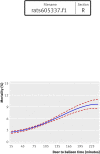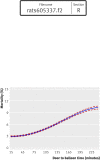Association of door-to-balloon time and mortality in patients admitted to hospital with ST elevation myocardial infarction: national cohort study
- PMID: 19454739
- PMCID: PMC2684578
- DOI: 10.1136/bmj.b1807
Association of door-to-balloon time and mortality in patients admitted to hospital with ST elevation myocardial infarction: national cohort study
Abstract
Objective: To evaluate the association between door-to-balloon time and mortality in hospital in patients undergoing primary percutaneous coronary intervention for ST elevation myocardial infarction to assess the incremental mortality benefit of reductions in door-to-balloon times of less than 90 minutes.
Design: Prospective cohort study of patients enrolled in the American College of Cardiology National Cardiovascular Data Registry, 2005-6.
Setting: Acute care hospitals.
Participants: 43 801 patients with ST elevation myocardial infarction undergoing primary percutaneous coronary intervention.
Main outcome measure: Mortality in hospital.
Results: Median door-to-balloon time was 83 minutes (interquartile range 6-109, 57.9% treated within 90 minutes). Overall mortality in hospital was 4.6%. Multivariable logistic regression models with fractional polynomial models indicated that longer door-to-balloon times were associated with a higher adjusted risk of mortality in hospital in a continuous non-linear fashion (30 minutes=3.0%, 60 minutes=3.5%, 90 minutes=4.3%, 120 minutes=5.6%, 150 minutes=7.0%, 180 minutes=8.4%, P<0.001). A reduction in door-to-balloon time from 90 minutes to 60 minutes was associated with 0.8% lower mortality, and a reduction from 60 minutes to 30 minutes with a 0.5% lower mortality.
Conclusion: Any delay in primary percutaneous coronary intervention after a patient arrives at hospital is associated with higher mortality in hospital in those admitted with ST elevation myocardial infarction. Time to treatment should be as short as possible, even in centres currently providing primary percutaneous coronary intervention within 90 minutes.
Conflict of interest statement
Competing interests: None declared.
Figures
References
-
- Antman EM, Hand M, Armstrong PW, Bates ER, Green LA, Halasyamani LK, et al. 2007 focused updated of the ACC/AHA 2004 guidelines for the management of patients with ST-elevation myocardial infarction: a report of the American College of Cardiology/American Heart Association Task Force on Practice Guidelines (Writing Group to Review New Evidence and Update the ACC/AHA 2004 Guidelines for the Management of Patients with ST-Elevation Myocardial Infarction). J Am Coll Cardiol 2008;151:210-47. - PubMed
-
- De Luca G, van’t Hof AWJ, de Boer M-J, Ottervanger JP, Hoorntje JC, Gosselink AT, et al. Time-to-treatment significantly affects the extent of ST-segment blush resolution and myocardial blush in patients with acute myocardial infarction treated by primary angioplasty. Eur Heart J 2004;25:1009-13. - PubMed
-
- De Luca G, Suryapranata H, Ottervanger JP, Antman EM. Time delay to treatment and mortality in primary angioplasty for acute myocardial infarction: every minute of delay counts. Circulation 2004;109:1223-5. - PubMed
-
- Berger PB, Ellis SG, Holmes DR Jr, Granger CB, Criger DA, Betriu A, et al. Relationship between delay in performing direct coronary angioplasty and early clinical outcome in patients with acute myocardial infarction. Circulation 1999;100:14-20. - PubMed
-
- Van’t Hof AWJ, Liem A, Suryapranata H, Hoorntje JCA, de Boer M-J, Zijlstra F. Clinical presentation and outcome of patients with early, intermediate, and late reperfusion therapy by primary coronary angioplasty for acute myocardial infarction. Eur Heart J 1998;19:118-123. - PubMed
Publication types
MeSH terms
Grants and funding
LinkOut - more resources
Full Text Sources
Medical


